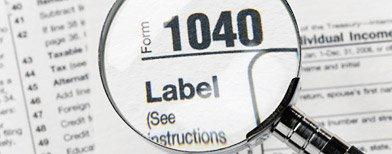 If there’s one type of borrower in this credit market whose profile has been scrutinized the most, it’s the sole proprietor. Self-employed individuals/sole proprietors used to be able to get stated-income loans that would allow them to provide supporting income documentation. But the paradigm has shifted, and these borrowers now have a more challenging time qualifying for a mortgage than ever before.
If there’s one type of borrower in this credit market whose profile has been scrutinized the most, it’s the sole proprietor. Self-employed individuals/sole proprietors used to be able to get stated-income loans that would allow them to provide supporting income documentation. But the paradigm has shifted, and these borrowers now have a more challenging time qualifying for a mortgage than ever before.
Financial professionals often advise the self-employed to write off as much of their expenses as possible in order to show less income on their taxes. While this is quite favorable from an accounting standpoint, taking expenses reduces the taxable income needed to offset liabilities, such as a mortgage payment.
The common self-employed borrower traps most sole proprietors will encounter when getting a mortgage include:
Not showing enough income on your Schedule C Form
Showing little income on your Schedule C reduces the amount of income you’ll have to offset your liability (new mortgage), and showing a loss (negative income) makes things even tougher. To determine the income that will be used to offset a mortgage payment (including taxes, insurance and private mortgage insurance, depending on loan program), take your combined annual income (your annual profit) for the past two years then divide by 24. The income will need to be at least 55 percent greater than the mortgage payment, assuming no other liabilities.
Not being self-employed for 2 years
This is not to say your loan will be denied if you have less than two years of self-employment history. However, you’ll need to show a net profit, with a current year-to-date profit and loss statement as well as your most recent year’s self-employed income tax returns.
Not being able to document large cash deposits
Any deposits going into your bank account have to be part of your regular income and will need to be documented as such.
Not having a third-party business validation
This means either a business license — such as a real estate license if you’re a real estate agent, for example — or a CPA letter showing that you have filed self-employed income tax returns for the past 24 months. Another option is showing your business profile online.
Using business funds in a mortgage transaction
If the funds for the transaction are coming from a business account, the mortgage lender will assess your ability to use those funds as part of your regular cash flow and business model. In other words, if your regular cash flow, income and business are such that those funds would be plausible for your use, you’ll be OK. This will be determined by the mortgage underwriter. However, if the business funds do not support a way of how those funds were originally generated, you’ll need to provide a CPA letter showing that the use of those funds does not impact the cash flow of your sole proprietorship business.
Business liabilities
Debt obligations that the business pays will show up on your credit report, so be prepared to provide supporting documentation. If these are business debts, but are paid for personally, these debts cannot be omitted, and they will count against your borrowing power.
 As a consumer, you’re used to being the one with the power to judge the products and services you purchase and the companies that offer them. But when it comes to financing your new home or refinancing the one you already own, you hand that power over to the mortgage lenders and, more specifically, the underwriting department.
As a consumer, you’re used to being the one with the power to judge the products and services you purchase and the companies that offer them. But when it comes to financing your new home or refinancing the one you already own, you hand that power over to the mortgage lenders and, more specifically, the underwriting department.